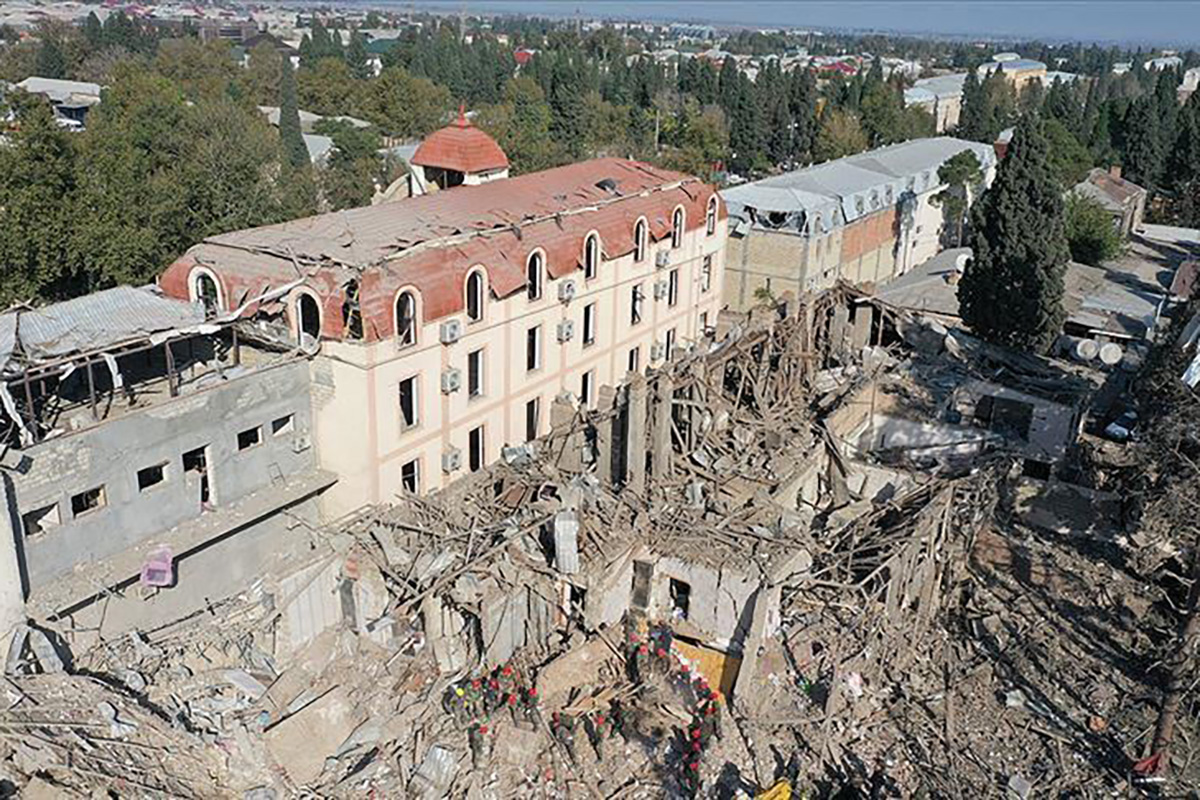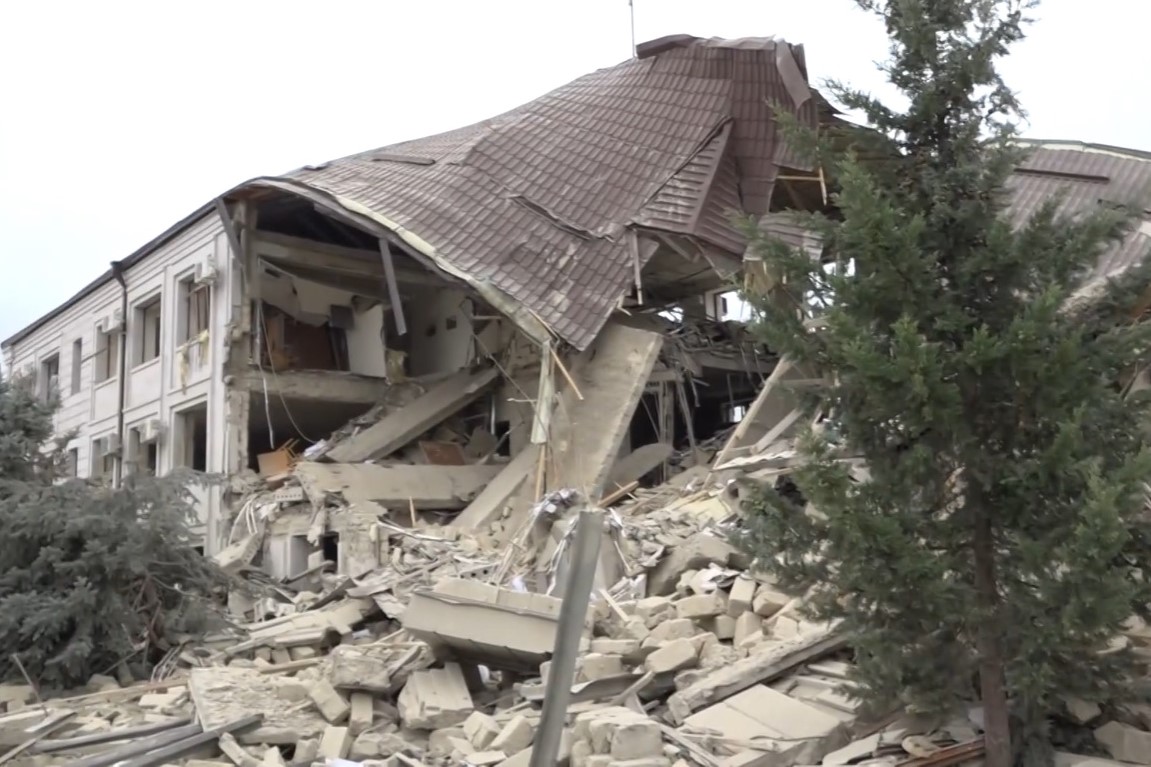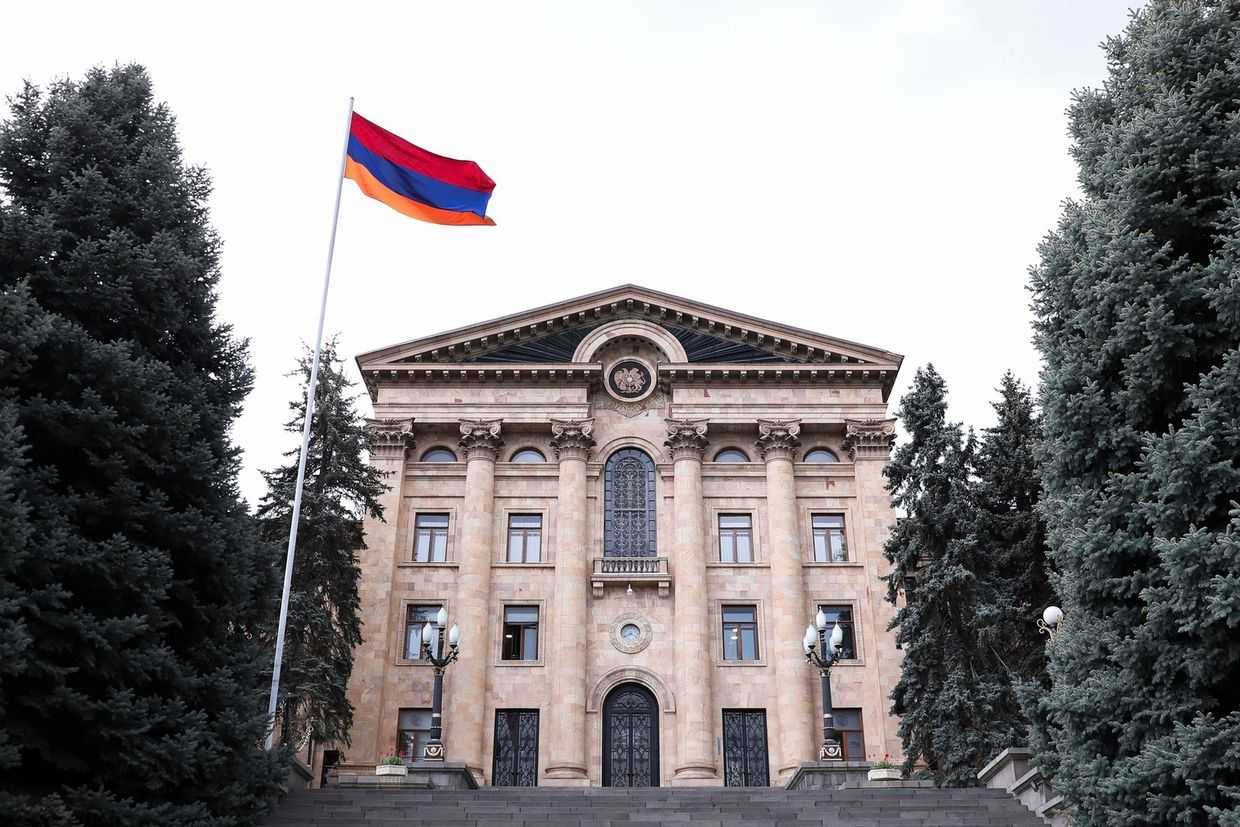
A video circulating online appearing to show Azerbaijani forces executing two captives is the latest evidence of war crimes during the fighting in Nagorno-Karabakh.
In the video, two men bound and draped in the flag of Nagorno-Karabakh are gunned down.
According to an investigation by Bellingcat, the video first appeared on Azerbaijani Telegram channels along with a video appearing to show the two men being captured.
Bellingcat concluded that the videos were likely genuine, and geolocated them to a square in the town of Hadrut, the focus of some of the most intense fighting in recent days.
Bellingcat also speculated based on the uniforms and equipment worn by the Azerbaijani soldiers that they could be members of the special forces.
They also noted that the captured men were likely Armenian combatants.
The Atlantic Council’s Digital Forensic Research Lab (DFRLab) also verified that the video was taken in the same square in Hadrut.
‘The videos were too low-quality to positively identify any of the individuals in the videos, but equipment worn by the men in the video were consistent with what would be expected from soldiers on each respective side’, they wrote.
The Armenian Prosecutor’s Office has denied that the men in the video were combatants. They identified them as 73-year-old B.H. and 25-year-old Y.A. both from the Hadrut region.
Prosecutor’s Office spokesperson Gor Abrahamyan said they had opened an investigation.
Azerbaijani officials have claimed that the videos were fake. The Prosecutor’s Office of Azerbaijan has launched an investigation into the incident, but said that ‘according to initial indications, there are reasonable doubts that these videos are fake.’
According to the Nagorno-Karabakh Human Rights Ombudsman Office, in an earlier incident on 10 October, Azerbaijani forces killed four civilians in Hadrut, including a man with disabilities and his mother. They said that six civilians in Hadrut had been killed in the fighting so far.
No information on prisoners of war held by either side has yet been released.
Bombing of civilians
Since the war broke out on 27 September, both sides have accused the other of deliberately targetting civilian population centres and infrastructure.
Eighty-one civilians have reportedly been killed so far, 47 in Azerbaijan and 34 on the Armenian side. Hundreds more have been wounded.
In one of the most deadly incidents on 11 October, a missile strike on Ganja, the second-largest city in Azerbaijan, levelled a block of flats killing 10 and injuring 35.

Towns and villages throughout Nagorno-Karabakh have also come under artillery fire. The capital Stepanakert has been the most seriously hit, coming under almost daily bombardment since the fighting broke out.
In a statement on 5 October, Amnesty International confirmed the use of cluster bombs on Stepanakert.
Cluster bombs are a type of weapon that scatter a number of smaller bomblets across a wide area. They are known to have a high failure rate, meaning unexploded bombs can stay active killing civilians for years after their use.

‘Amnesty International’s Crisis Response experts were able to trace the location of the footage to residential areas of Stepanakert, and identified Israeli-made M095 DPICM cluster munitions that appear to have been fired by Azerbaijani forces.’
‘The use of cluster bombs in any circumstances is banned under international humanitarian law, so their use to attack civilian areas is particularly dangerous and will only lead to further deaths and injuries’, said Denis Krivosheev, Amnesty International’s acting Head of Eastern Europe and Central Asia.
The use of cluster munitions is prohibited by the international Convention on Cluster Munitions. The convention has been signed by 110 countries, though neither Armenia nor Azerbaijan are among them.
For ease of reading, we choose not to use qualifiers such as ‘de facto’, ‘unrecognised’, or ‘partially recognised’ when discussing institutions or political positions within Abkhazia, Nagorno-Karabakh, and South Ossetia. This does not imply a position on their status.









